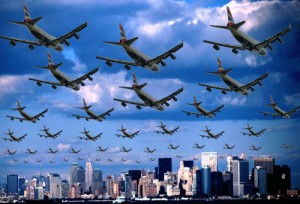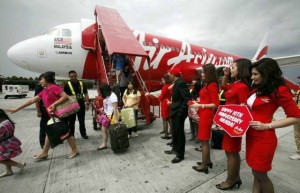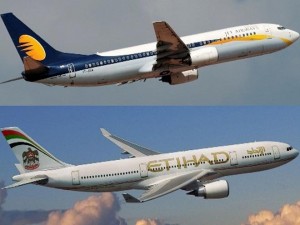-
Air India serves 49 domestic destinations and 26 international destinations in 19 countries across Asia, Europe and North America.
-
Jet Airways connects 52 domestic destinations and 20 international destinations with Jet Airways and JetKonnect together operating over 580 flights daily.
-
Etihad flies to nine destinations (Mumbai, Delhi, Kochi, Ahmedabad, Hyderabad, Thiruvananthapuram, Kozhikode, Chennai, Bengaluru) in India with 59 flights a week.
-
Emirates Airways flies to ten destinations (Mumbai, Delhi, Kochi, Ahmedabad, Hyderabad, Kolkata, Thiruvanathapuram, Kozhikode, Chennai and Bengaluru) in India with 185 flights a week.
-
Air Arabia flies to 13 destinations (Delhi, Mumbai, Hyderabad, Jaipur, Chennai, Bengaluru, Coimbatore, Kochi, Ahmedabad, Goa, Kozhikode, Nagpur, Thiruvananthapuram) in India with 112 flights a week.
-
Lufthansa flies to five destinations (Mumbai, Delhi, Chennai, Bengaluru and Pune) in India with 46 flights a week.
India’s aviation sector has been going through turbulent times because of high operating costs and fierce competition. Domestic passenger traffic fell six per cent in the first nine months of 2012 because of a steep rise in fares, Jet Airways, India’s second biggest airline group by market share, said in an analysts’ call. Almost all domestic carriers cut airfares last month to increase volumes, and AirAsia’s entry is expected to spur more fare cuts.
However, the budget carrier has a big advantage over the others: its cost per passenger kilometre excluding fuel is the lowest in the world at just $2. SpiceJet is close with $2.2. Experts say IndiGo, Jet Airways, SpiceJet, Air India and Go Air are likely to come under pressure and drop fares further once the proposed carrier picks up momentum. Kingfisher Airlines is already on the verge of collapse because of massive losses and debts. “The sector will see a bloodbath before moving towards a phase of consolidation,” predicts Amber Dubey, head of aviation at consultancy firm KPMG.
“India, with its low flyerbase, regulatory challenges and high cost structure, cannot afford more than four strong national airlines.” AirAsia had been waiting in the wings ever since India opened the airlines sector to investment by foreign carriers about six months ago. But when Fernandes announced the decision to join hands with the Tatas, many in the industry were surprised. The Tatas pioneered civil aviation in India when they set up Tata Airlines in 1932, but the government took over the airline in 1953 and rebranded it Air India.
First, in March, Malaysia’s AirAsia Bhd, the continent’s largest low-cost airline, won the Indian government’s approval for a joint venture with Tata Sons Ltd and Arun Bhatia of Telestra Tradeplace Pvt. Ltd for a joint venture in which it will hold a 49% stake.
In April, Etihad Airways PJSC, the national airline of the United Arab Emirates, agreed to acquire a 24% stake in Jet Airways (India) Ltd for $379 million. Etihad also bought the Heathrow Airport slots of Jet Airways for $70 million and purchased a majority stake in the airline’s frequent flyer programme for $150 million.
The two transactions, which followed a September decision by the Indian cabinet to allow foreign airlines a stake of up to 49% in domestic carriers, has created “an impression worldwide that Indian civil aviation is back on the growth path”, aviation minister Ajit Singh said.
“The good thing is that because of these two deals all the other airlines will have to be more competitive, and from a passenger point of view, the passenger will gain because of competition and many Indian cities will be directly connected to the international network,” said Singh, who took up his current job in December 2011.
To be sure, the fundamentals of the industry that carries an estimated 60 million passengers a year, out of a population of 1.2 billion, haven’t changed.
The airline industry is weighed down by a combined debt of $20 billion, paced byKingfisher, Jet Airways and state-owned Air India Ltd, which in 2010 was offered a $5 billion government bailout. While a huge chunk of this debt funded the purchase of aircraft, airlines were also taking on working capital loans to fund their operations.
The economy, which is estimated to have grown 5% in the fiscal ended 31 March, its slowest pace in 10 years, is yet to show signs of a sustainable rebound.
Still, the twin deals are being seen as a potential game changer that will pave the way for the third phase of rapid expansion in India’s aviation industry.
Airlines under pressure
Airlines like SpiceJet, IndiGo and GoAir would also be pushed to seek strategic tie-ups to stay competitive, said a foreign airline executive who watches the Indian market closely, but declined to be named because he is not authorized to speak with the media.
Qatar Airways is in talks with IndiGo for a code-share partnership, the West Asian carrier’s chief executive officer Akbar al-Baker said this month, after denying in January any talks on a tie-up with SpiceJet, Gulf News reported on 6 May. Code sharing is an agreement that allows passengers to use a ticket issued by one airline to travel to an onward destination on another airline.
European airlines such as Deutsche Lufthansa AG, British Airways Plc and Air France, too, will likely face competition from the alliance between Jet Airways and Etihad, the foreign airline executive cited above said.
“The weakest will be weeded out first—European carriers, which have for years done well in India just because they are mid-way and have large networks in the US and India, will suffer the most because they have bad or average service,” the executive said. “So Lufthansa, that flies to 16 points in the US and five in India corners most of the traffic, but that won’t be the case anymore. Similarly, British Airways and Air France.”
Most foreign airlines are aware that they will have to put changes in place. Lufthansa said it has made several product-led changes. It’s planning to start a new low-cost airline for markets such as India in an all-economy configuration.
“India is a core market of strategic importance for Lufthansa,” an airline spokesperson said in an email. “We underlined our commitment to this market by investing several hundred million euros in new products and services there recently”, including in seats, lounges and aircraft such as the Boeing 747-8.
Change will also force India to provide a more conducive business environment to airlines. The pressure won’t come from just the airlines but foreign governments as well, when their trade missions seek a more accommodating stance towards carriers in their country.
“The No.1 priority for the government should be rationalization of taxes on fuel and import levies and services taxes on MRO (maintenance, repair and overhaul) activities, followed by infrastructure development with focus on bringing more cities under the aviation map,” the foreign airline executive cited above said.
India’s airlines have not been able to persuade the government to reduce taxes on jet fuel, making it among the costliest of countries for this. Fuel expenses make up 40% of airlines’ operational costs in India, compared with 20-22% internationally.
Some rules are already being tweaked, and passengers may not welcome all of them. On 30 April, India’s aviation ministry allowed airlines to unbundle and charge passengers for services including preferential seating, the use of airport non-alcoholic beverages other than drinking water and the carriage of sports equipment and musical instruments.
The AirAsia effect
Air Asia’s maverick promoter, Tony Fernandes, has made no bones about saying that he will replicate his winning model in India. By simply playing on price, and offering rock-bottom fares that vary from half to a fifth of that of its rivals, he has built a reputed airlines brand in Southeast Asia. While his intention to make price the “number one differentiator” in India may be common knowledge, the tarmac ahead is paved differently from AirAsia’s home market.
India might hold a few surprises for Fernandes and the just-appointed AirAsia India CEO Mittu Chandilya who are looking to play price warriors. Fernandes says of Chandilya in a tweet: “Mittu is coming…to change Indian travel and make it affordable for all Indians to fly.”
Low-cost carriers (LCCs) in India say they do not expect AirAsia to commit hara-kiri in the domestic skies, what with net average fares already in the low range of Rs 4,000-4500 per passenger. They point out that AirAsia would have learnt – from its not-too-successful debut in India through their international operations – that low-cost fares, which it offers in Malaysia, are unsustainable in India.
LCCs will, however, brace for average net fares to go down by 8-10 per cent because AirAsia is expected to begin operations with rock-bottom promotional fares for a few seats. “Such fares can only be promotional in nature in India and can’t be sustained for long. Even we will bring down prices. But we are not worried,” says a top executive of a leading LCC in the country.
But AirAsia’s signature is its mega low-cost fare. For instance, it is offering two million seats for travel to Southeast Asia at fares which are available for as low as 30 per cent of its regular fare. Yet, for domestic passengers in India, there is no novelty in such a scheme anymore. After all, domestic LCCs have used a similar marketing tack to get passengers to fly in the lean seasons. SpiceJet kicked off a price war, a few months ago, by slashing fares for one-way travel across the country, down to a consolidated Rs 2,013, inclusive of all taxes. The offer of one million such one-way tickets for a limited period soon had other LCCs following suit.
AirAsia’s challenge in establishing the brand in India is a classic one. Unlike Malaysia where it did not have competition from other LCCs, its new market has quite a few thriving players. It is entering when
this indigenous competition already controls over 60 per cent of the market. So, for the late entrant, Fernandes’ ambition to press 36 aircraft into operation by 2017-18, will still lend it a size that will only be a third of that of the biggest player, IndiGo. It will fly over 120 aircraft to as many as 40 cities by then.
Survival in the low-cost air travel space depends on efficiencies. Companies like IndiGo have become adept at squeezing out operational efficiencies – it uses its aircraft (flying-time of 12 hours each) and turns around its planes (within 25 minutes) almost as quickly as AirAsia. So much so that IndiGo has taken on the brand position of being a punctual airline, with a popular campaign focusing on flying and reaching destinations according to the Indigo Standard Time.


